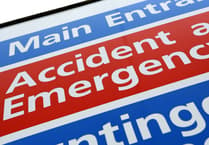The RSPCA is issuing advice for pet owners in the run up to another busy bonfire night season.
Last year the RSPCA received 364 calls relating to fireworks in October and November - more than in both 2013 (310) and 2012 (326).
Research shows that up to 45 per cent of dogs may be fearful of fireworks so to help combat the problem the RSPCA has come up with some advice to help pet owners.
RSPCA Scientific Officer Lisa Richards said: “As the winter months draw in many of us look forward to going to local bonfire and fireworks festivities.
“The RSPCA want to make sure the enjoyment is for everyone - as animals may become distressed or confused at what is happening.
“We would always advise letting your vet know of any signs of stressed or unusual behaviour in your animal so they can give you advice to help your pet in the long-term, but there are also some quick tips to help you and your pet during the fireworks.”
The RSPCA advises:
For any pet, whether it be a dog, cat, rabbit or rodent, make sure you provide suitable hiding places with extra bedding where they can feel safe. This is also true for animals that live outside.
Close all windows and curtains.
Play music or put on the television to muffle the fireworks, using a Sounds Scary! CD to help dogs learn to be less afraid of loud noises.
Make sure they’re kept in a safe place during any display.
Never punish or fuss over them as it can make things worse.
Make sure your pets are microchipped in case they escape.
Give your dog their walk earlier in the day.
Never ever take a dog to a fireworks display – even if they don’t make noise – it’s still highly likely to be a stressful situation for them.
Pheromone diffusers may help dogs and cats to feel calmer.
The RSPCA would also ask organisers to be vigilant and give plenty of notice to people in the area and also to ensure there are no farm or zoo animals in the area who may be affected.
Wildlife can also be burned to death by bonfires so organisers should check them carefully before lighting to make sure there are no wild animals nesting or hiding inside. It helps to build the bonfire as near as possible to the time of lighting, or move them before lighting, to ensure hedgehogs and other wildlife are not sleeping in the pile when it is lit.



Comments
This article has no comments yet. Be the first to leave a comment.